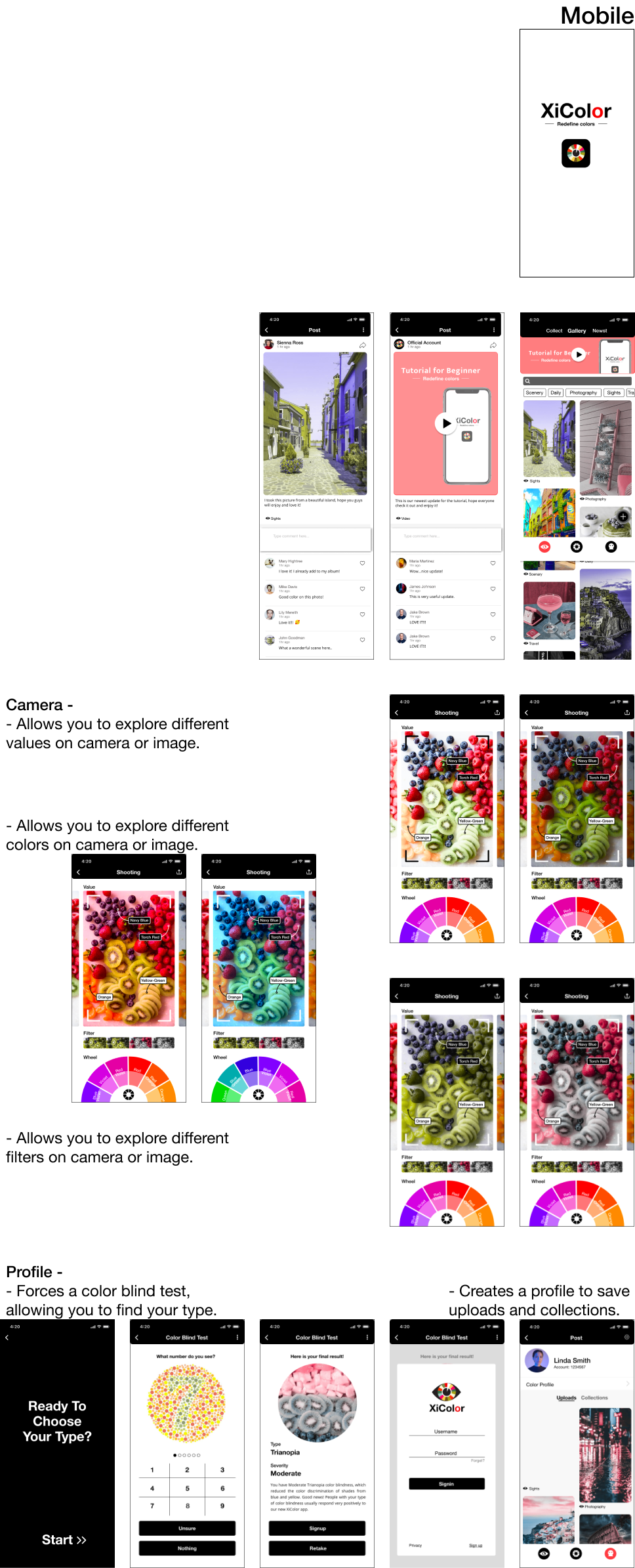Project



Introduction:
XiColor emerged from a desire to address the challenges faced by the colorblind community in accessing and experiencing the world of design. By delving into the complexities of color blindness and the need for inclusive design, I then embarked on a journey to create a powerful tool that not only assists colorblind individuals in perceiving color but also educates designers on creating accessible designs for everyone.
Understanding Color Blindness:
Extensive research was conducted to gain insights into the experiences of colorblind individuals and the limitations they face in perceiving color.
Empathy-Driven Design:
I sought to go beyond mere functionality by empathizing with the emotional aspect of color blindness, aiming to create a tool that fosters a sense of inclusivity and empowerment.
Educational Component:
Recognizing the importance of educating designers on designing for colorblindness, the project aimed to provide resources and tutorials to bridge the knowledge gap in inclusive design practices.


Challenges Faced:
Technical Complexity:
Developing an AI-driven camera feature for mobile devices presented technical challenges in accurately detecting and interpreting colors for colorblind users.
User Experience:
Ensuring that both desktop and mobile platforms offer intuitive navigation and usability for their respective user groups, while also facilitating collaboration between designers and colorblind individuals.
Communication of Purpose:
Clarifying the purpose and functionality of the download tool proved challenging, highlighting the importance of clear and concise communication in user interfaces.
Solutions Implemented:
Two-Pronged Approach:
Catering to the needs of both colorblind individuals and designers through separate desktop and mobile platforms, each tailored to their specific use cases.
Educational Resources:
Providing comprehensive resources on color blindness and inclusive design practices, including tutorials and guides, to empower designers to create accessible content.
User Testing and Feedback:
Conducting thorough user testing to identify usability issues and areas for improvement, such as refining the navigation and enhancing clarity in tool functionality.
Future Collaboration Emphasis:
Planning to enhance collaboration between desktop and mobile platforms to reinforce the message of inclusivity and mutual support between designers and colorblind individuals.


Outcome and Conclusion:
XiColor represents a significant step towards fostering inclusivity in design by addressing the needs of the colorblind community and providing resources for designers to create accessible content. Through empathy-driven design and a commitment to user feedback, the project has laid the groundwork for a more inclusive and collaborative design environment. Moving forward, I remain dedicated to further enhancing the platform and promoting awareness of inclusive design principles.
This case study demonstrates our ability to tackle complex societal issues through innovative design solutions, leveraging technology to empower marginalized communities and promote inclusivity in the digital space. Through XiColor, we have showcased our skills in research, empathy-driven design, and user-centered problem-solving, paving the way for a more accessible and equitable future in design.